This is the third part of a three part series from contributor Bryan Orozco and his journey to discover his family’s Bacanora legacy. Be sure to read part one and two if you haven’t already!
The sun has just set and all of us are lighting the way with our phones while tripping over the miscellanea of tools, rocks, and wood on the property, a sure indicator that it was time for us to go. As we close the gate behind us I realize I no longer need my phone. The near full moon lights everything in our path as we jump back into the back of the pickup truck. With the exception of the tires crunching over the pebbles of the dried riverbed, there is an eerie silence. Cans littering the bushes catch the light of the moon and paralleled the stars in the sky, and all the tios and the primas glance up, pointing out certain stars, satellites, and other unexplained light formations that dance together in some inexplicable cosmic dance.
Once we return to the house, we have a smorgasbord of different ceviches and meats, tostadas and cheeses, and as we finish up we sit in the front of the house to end our night with a few more beers and swigs of a pachita of mezcal, apparently made by one of the parientes, a distant relative, from el pueblo. According to my tio, my pariente/cousin intentionally brought down the bacanora to a loser proof because that is how he likes it. It turns out he made a small batch just for himself with a percentage floating around the high 30s to very low 40s. He is capable of giving it more of a kick but the demand for it isn’t there.
The following morning we wake up early and handle the usual milpa chores. Herding cattle, milking cows, making cheese, then over a simple breakfast we had cafe de talega, a type of coffee brewed with the grounds placed in a cloth and dipped into a tin vessel filled with boiling water. We clean up to head back home for the day so my tio boils water to clean the utensils. I pour myself a bit of this boiling water, river water, and gazing into the grassy pasture. I experienced an extreme minerality that I recognized in some bacanoras and sotols I have had before. Enlightened by this realization, I jump into the Jeep to spend the afternoon with a man that I’d soon realize keeps the lore of Las Sierras…
Calves on the rancho in Granados Milking the cows to make cheese The tios separating the coajado (cheese) from the whey Freshly strained cheese Keeping company with the ranch horses Boiled water on the ranch
He is a hefty older gentleman with his sombrero and western shirt, his Sunday best, with a weathered face and hands the color of the lighter soils of the desert. He is a friend of the family from a few towns over, Villa Hidalgo, and yet still refers to all of us as pariente. Casual conversation quickly becomes a rabbit hole into the history of bacanora and its uses, and as he learns about my interests and reason for visiting, his gaze and attention faced towards me, I jump on my phone to record and document the stories that have been passed down by word of mouth for generations.
He starts off telling me about the frosts of earlier years that killed off the maguey in town but that they are slowly regrowing but also mentions that there were programs nearby that helped grow agave to promote the bacanora economy that both helped the producer and created jobs. Though there were no official entities or groups named that were behind these programs, I wondered if the manicured field of angustifolia outside of town was a product of these programs.
I pick up a couple of new terms from Victor, such as the word churi, young agave that has yet to grow its quiote. He mentions a word that, even in Spanish I question its validity. Quimiquear, the root word being quimica, chemistry, as in the act of chemistry? In the context of what he speaks, quimiquear means the act of blending the distillation between the heads, cordon, and tails. Blending, in other words, which turns out to play a large role in production. The bubbles, or perlas, formed when checking the proof are called panal because they looked like honeycomb structures in their coffee mugs, the Sonoran jicara. One word that left me a bit unsettled was the word guacho, which at the end I don’t think they meant as a derogatory term but meant to describe the people of the south. When I would chime in on the similarities of traditions or productions in southern states I have visited, they would ask me how the gauchos would do certain things. I felt no malice behind the use of the word but it may also be a term engrained in the everyday vernacular of the norteño.
“En la casa siempre hubo bacanora”. At home there was always bacanora, he states. He tells me that the best bacanora is the one que te pegue, that hits you. Tiene que emborracha. “It needs to get you drunk. If it doesn’t get you drunk, what good is it for?” From here he starts to mention the medicinal properties of bacanora that were taught to him by los viejitos, the old people which referred to the older generations prior to him. I take a glance at him and I gauge him to be around his 60’s, and while he references the past often it is without a quantitative measurement. The stories flow.
I ask him if he knows anything about how bacanora came to be, how it was introduced into the regions, and his response is that 40 years ago, he heard the viejitos say that their ancestors made it as well, those that died hundred of years ago. He tells me of how we used to live in the rough terrain, of how they, the viejitos, used to hunt deer and bear for their pelts to keep warm in the harsh winters, how we utilized tea for warmth and medicine, and how bacanora was sought for the warmth that it brought. “Bacanora is an anticoagulant for the blood” he states. I question the validity internally but am captivated by the way he speaks, as if he is speaking beyond me. His words permeate the living room. We all listen.
“The viejitos found ways to combat the elements.” He tells us that when people suffered from hypothermia they were given bacanora to be brought back to life to not die as fast. The viejitos drank two caballitos, shots, a day for health, energy, and for the good of the heart. And then, feeling caught up in the stories, he mentions something that I feel encapsulates the alchemy of the drink. “Because bacanora, the plant, grows in the hot terrain, the viejitos drank it to stay warm while in the cold, and up in the sierra, where the the lechuguillas grow, and the lechuguilla is a beautiful plant mas chula que el maguey, more beautiful than the maguey, because it grew only in the Sierras, it harnessed the cold, so in the heat of the summer, the viejitos would take a shot of lechuguilla to stay cool. But they forgot how to make lechuguilla in la sierra.” And here he trails off for a moment, caught in the silence, perhaps reminiscing of the people that once lived and told him the same stories…
I ask about palmilla and sotol, and he acknowledges sotol that is grown in Chihuahua but tells me that palmilla is what the cattle and horses eat. He sees them as different plants and it makes me wonder from a scientific standpoint if they were different species of Dasylirion only the people of the land can identify.
As I feel dread and emptiness in my chest learning about the lost culture of Las Sierras, Victor tells us about a wedding he heard about or went to, this was unclear. There was a vinatero that got married, and to commemorate his wedding, he made a batch of bacanora and stored some of the batch in barrels. Wooden barrels. And for his 25th anniversary he served the old bacanora made for his wedding, and for the 50th anniversary, he was able to taste the aged vino that was made half a century ago.
I know there is much backlash about aged agave spirits outside of tequila, but recently I have had a change of heart knowing that in some families and communities, there are traditions that practice storing mezcal in barrels, and here was the living proof of it. And some of the bacanora brands I currently see carry expressions with age statements or infused with uvalama or other traditional remedies that I have heard people snarl and look down upon. In the midst of my catharsis, Victor finishes his story with a couple of words on the production. The viejitos, when making bacanora, would sometimes prefer to crush the agave with the handles of the axes that acted as mallets, and some would even use their feet to step and squeeze every single juice of the cooked agave.
The water, he says, is best up in La Sierra. The water contains minerals that are necessary to make bacanora, but there is some water that is too salty, and that water is no good for production. He states that the water from the sierra has a low salt content and states that when water passes through sand, it is clean because sand is the best natural filter.
Reaching for his beer, he goes over the process of distillation, which I had heard many times before, but the one piece that stood out is that in the act of blending, the person that blends the cuts of the distillation is just as important as the person distilling the mezcal. They have the palate and the knowledge to finalize a product and it gives me the impression that bacanora, like all other agave distillations in Mexico, is very much a product collaboration of the community.
That is my last day in Granados. I caught wind that an uncle from Arizona was in town so I will stop by and pay him a visit after soaking my feet in the river, but I take the long way to his house to contemplate all I have taken in. And with the sun setting, I look up at the Pirinola, the mountain overlooking Granados, and I shed tears knowing that some of the history, all of the traditions, and many gulps of the pachita of bacanora at hand now rest inside of me.
El Rio The family shot at the river Author Bryant Orozco contemplating the beauty and legacy

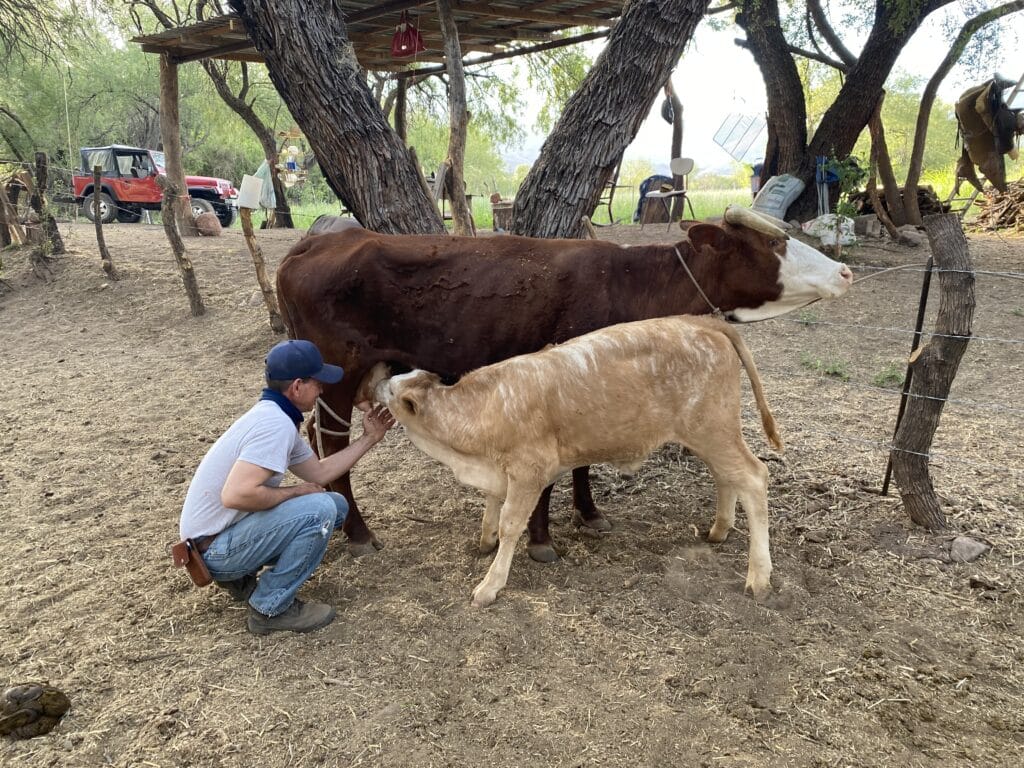
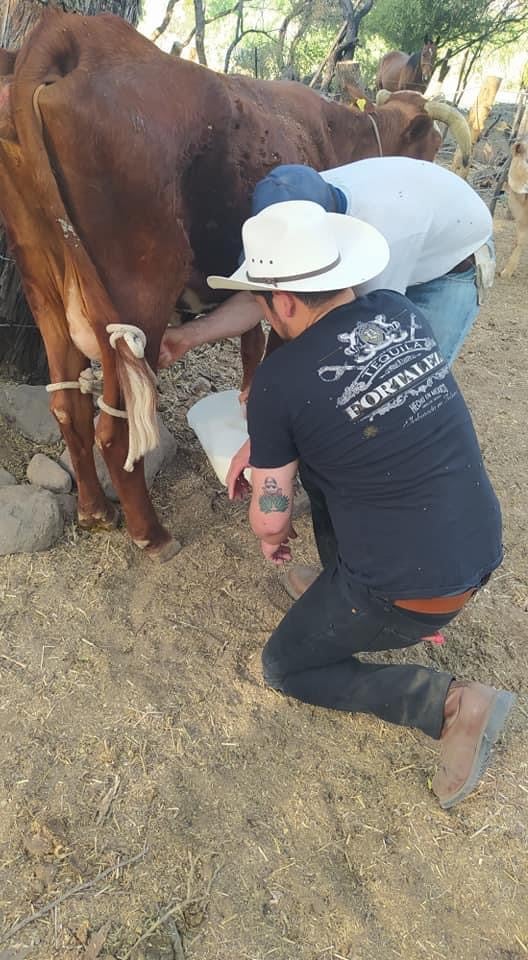
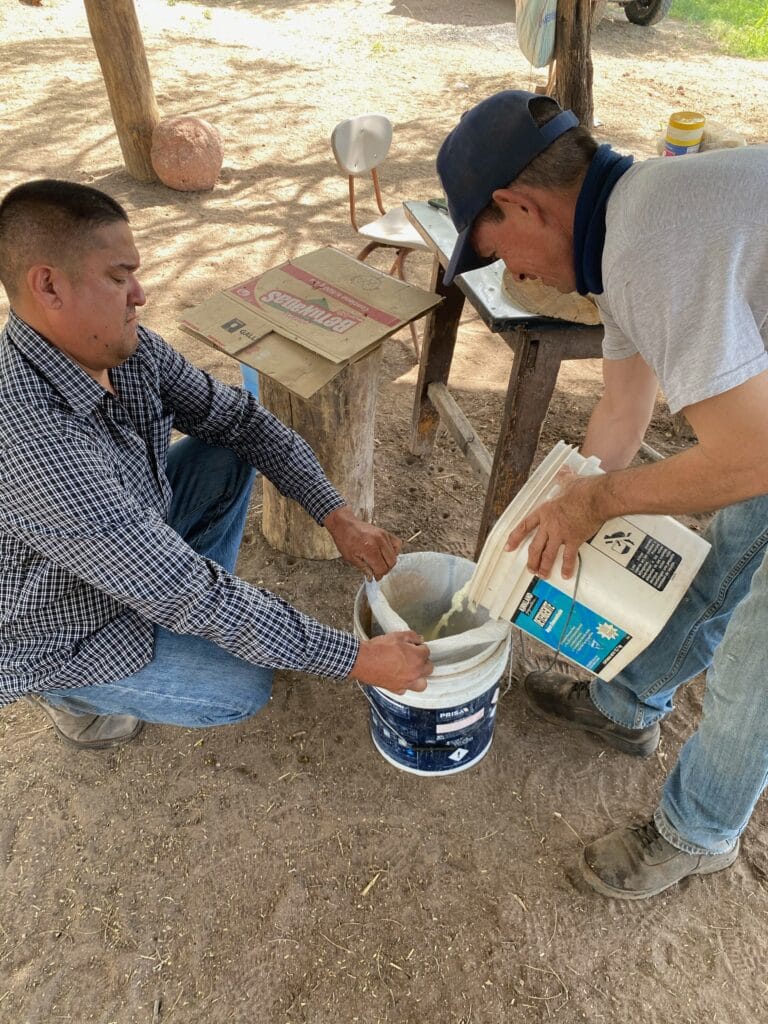
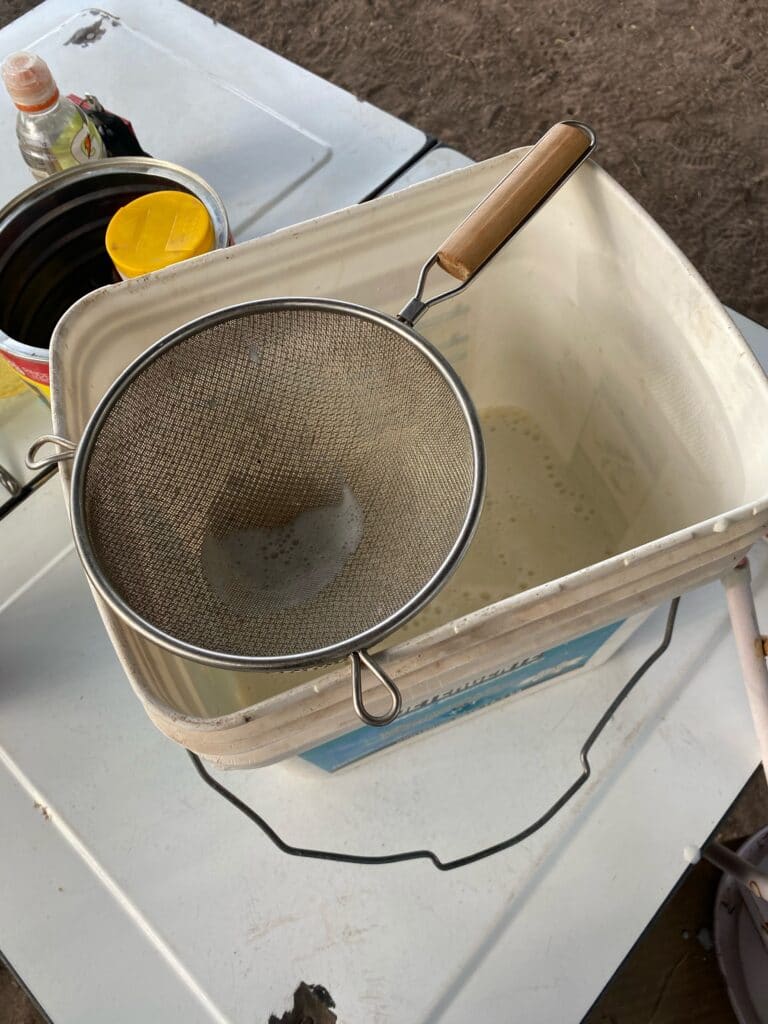
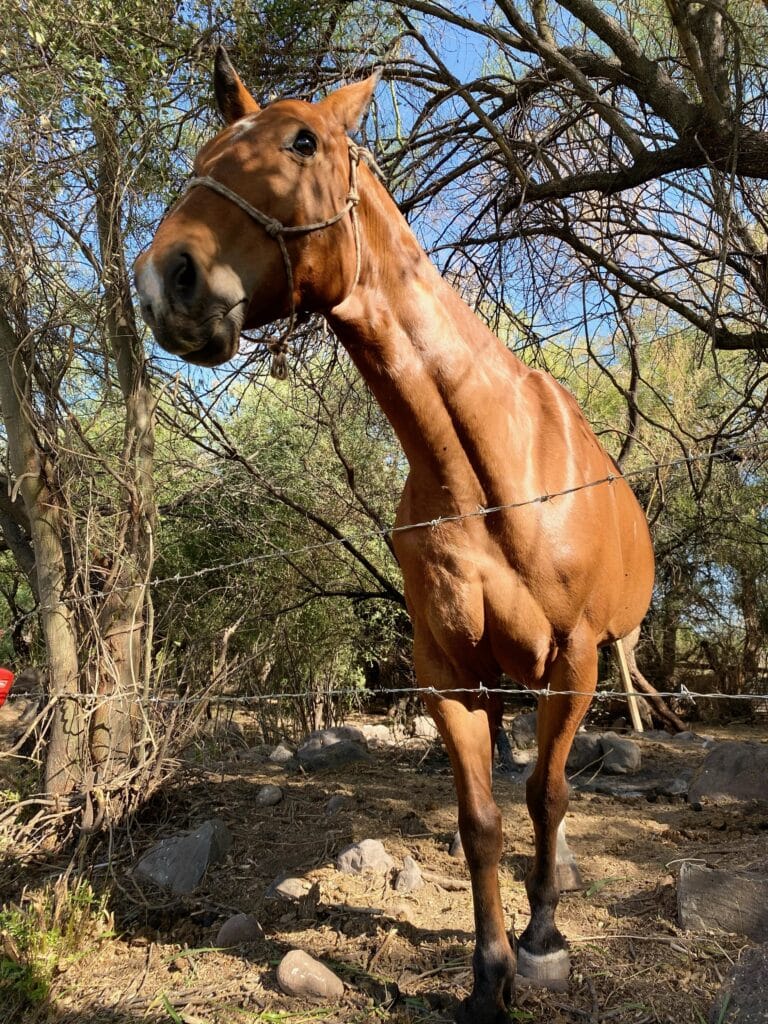
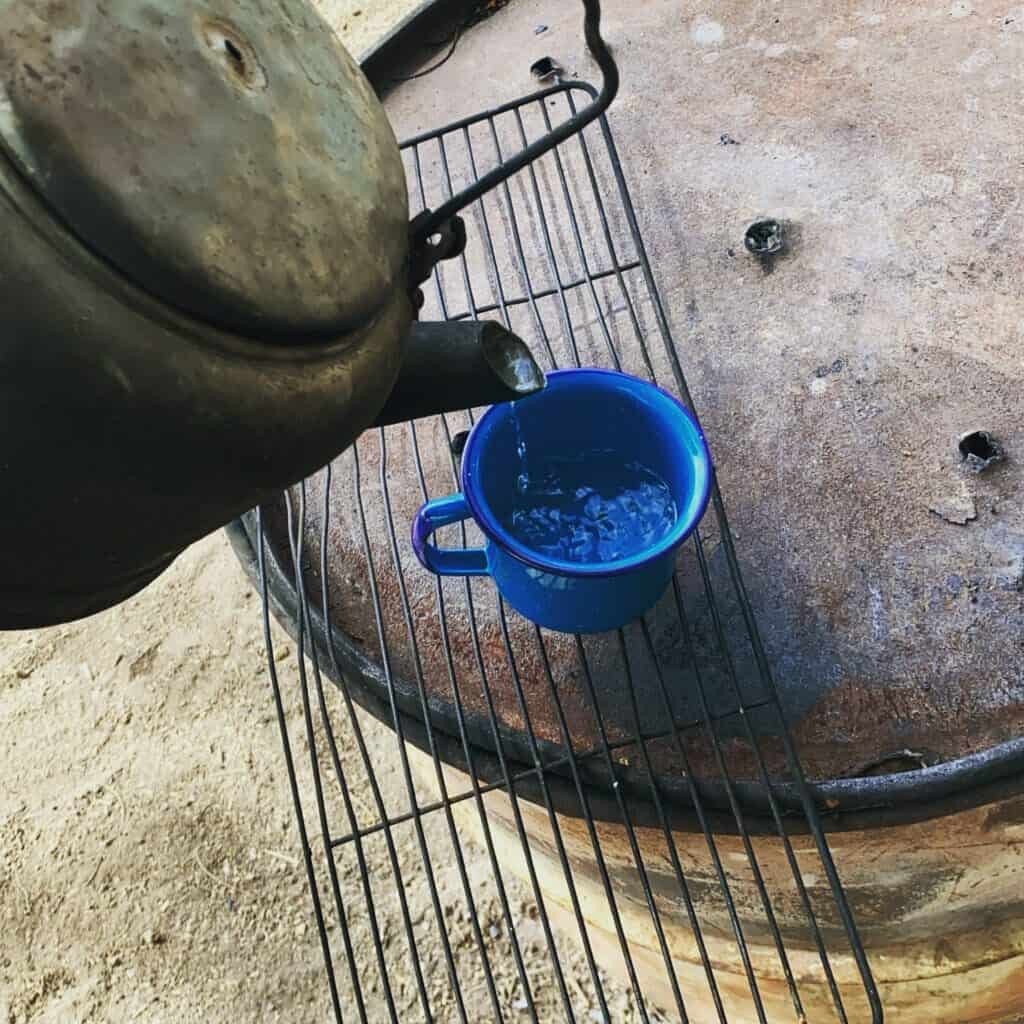
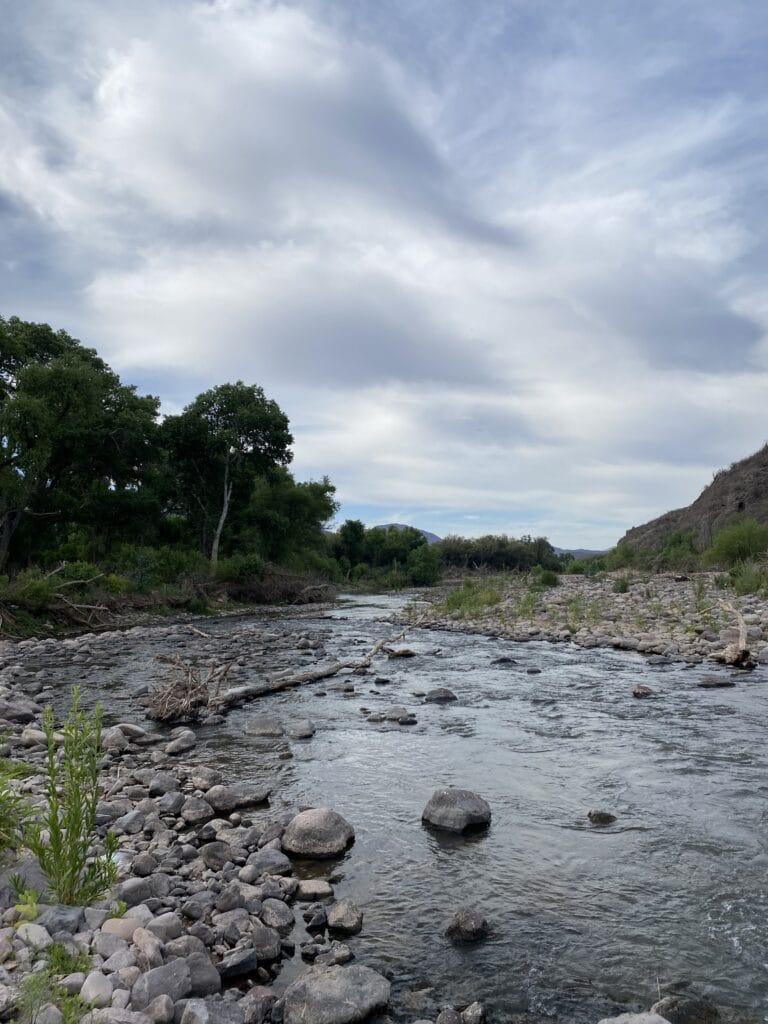
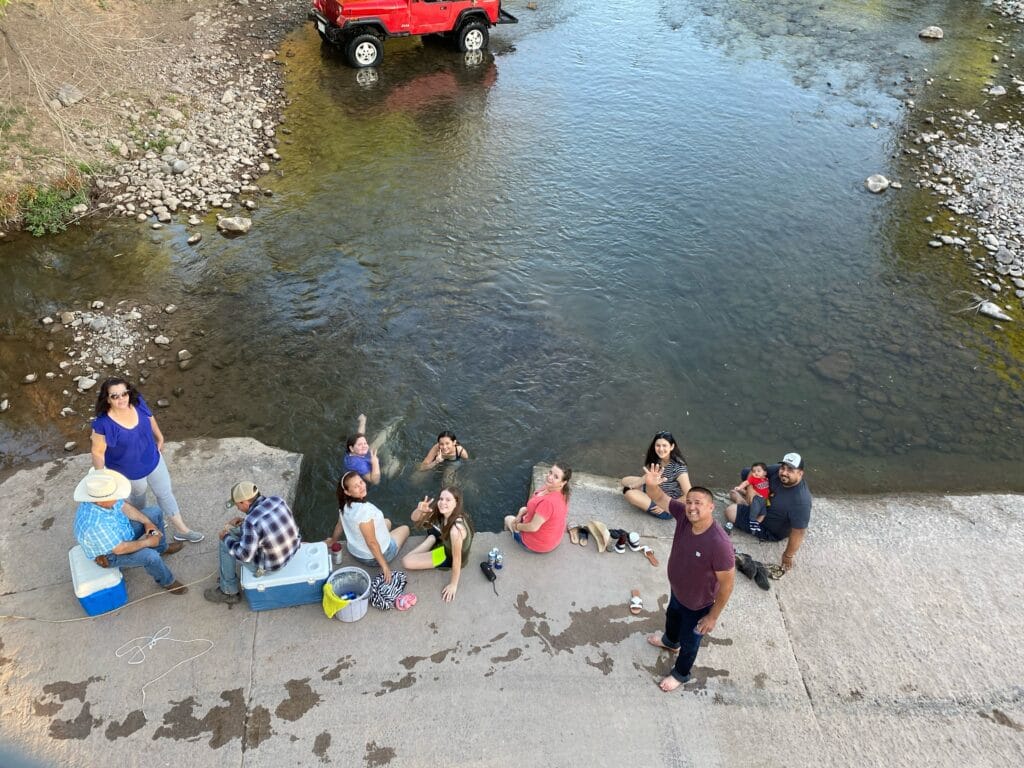
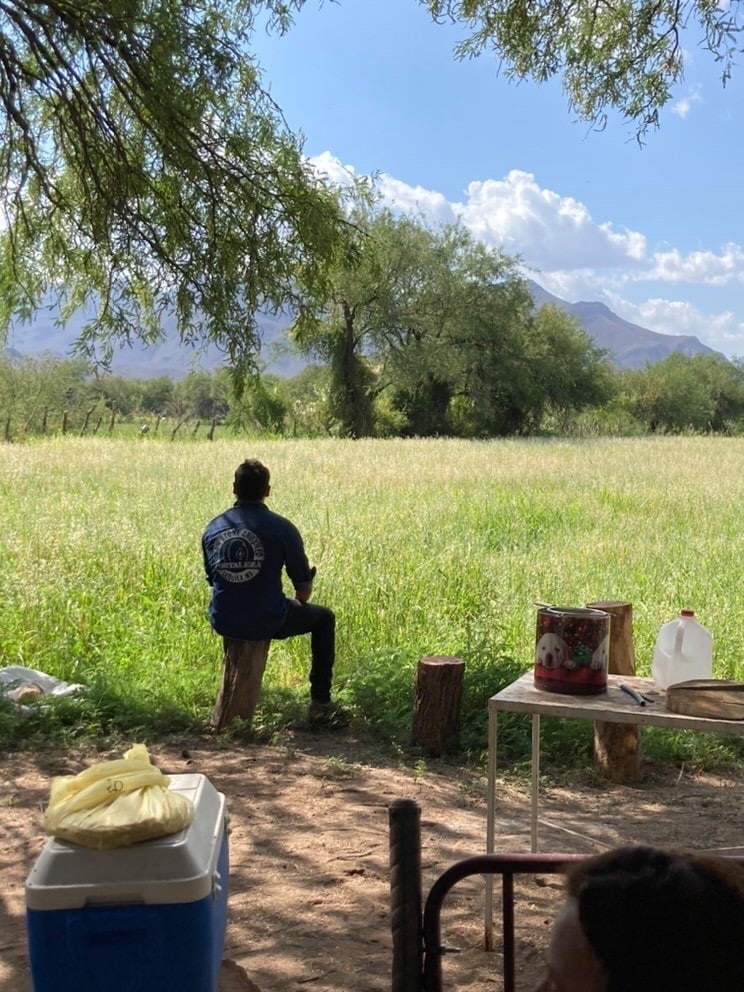
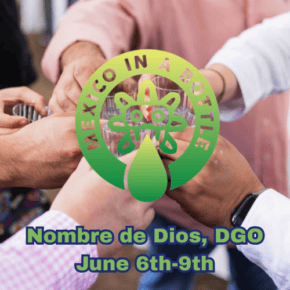
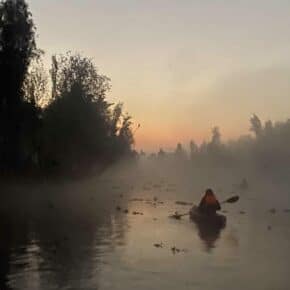
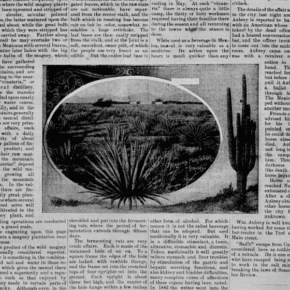









Great article; really enjoyed it! When you mentioned the agave cultivation projects, I was reminded of an article I read a few years ago that referenced cultivation projects. Apparently, the Sonoran government forced mining companies to grow and distribute Agave Americana seedlings as part of a compensation package for environmental damage they caused over the years.
https://fronterasdesk.org/content/681984/modernizing-mexican-moonshine-future-bacanora-sonora-and-beyond
I enjoyed this so very much. You are a fortunate man to have have such intimate access to those folks, those places, that culture.